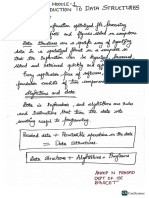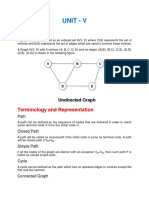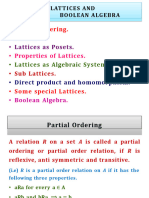0% found this document useful (0 votes)
50 views26 pagesUnit 4
The document discusses graphs and graph theory concepts. It defines what a graph is, different types of graphs, graph terminology including vertices, edges, degrees, and graph representations using adjacency matrices and lists. It also covers graph concepts such as walks, trails, paths, and cycles.
Uploaded by
dafalemrunal67Copyright
© © All Rights Reserved
We take content rights seriously. If you suspect this is your content, claim it here.
Available Formats
Download as PDF, TXT or read online on Scribd
0% found this document useful (0 votes)
50 views26 pagesUnit 4
The document discusses graphs and graph theory concepts. It defines what a graph is, different types of graphs, graph terminology including vertices, edges, degrees, and graph representations using adjacency matrices and lists. It also covers graph concepts such as walks, trails, paths, and cycles.
Uploaded by
dafalemrunal67Copyright
© © All Rights Reserved
We take content rights seriously. If you suspect this is your content, claim it here.
Available Formats
Download as PDF, TXT or read online on Scribd
/ 26






























































